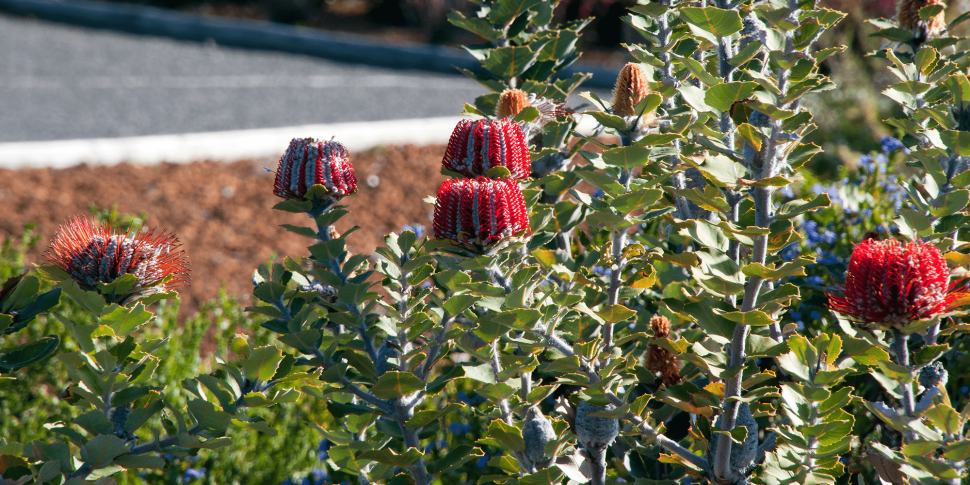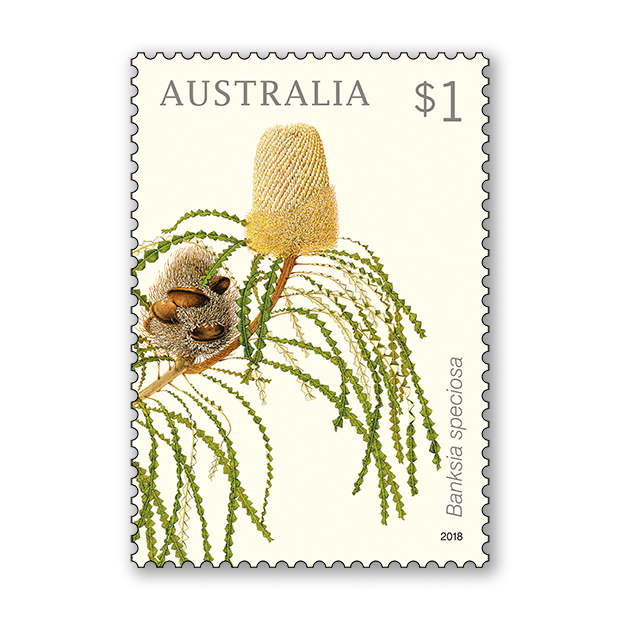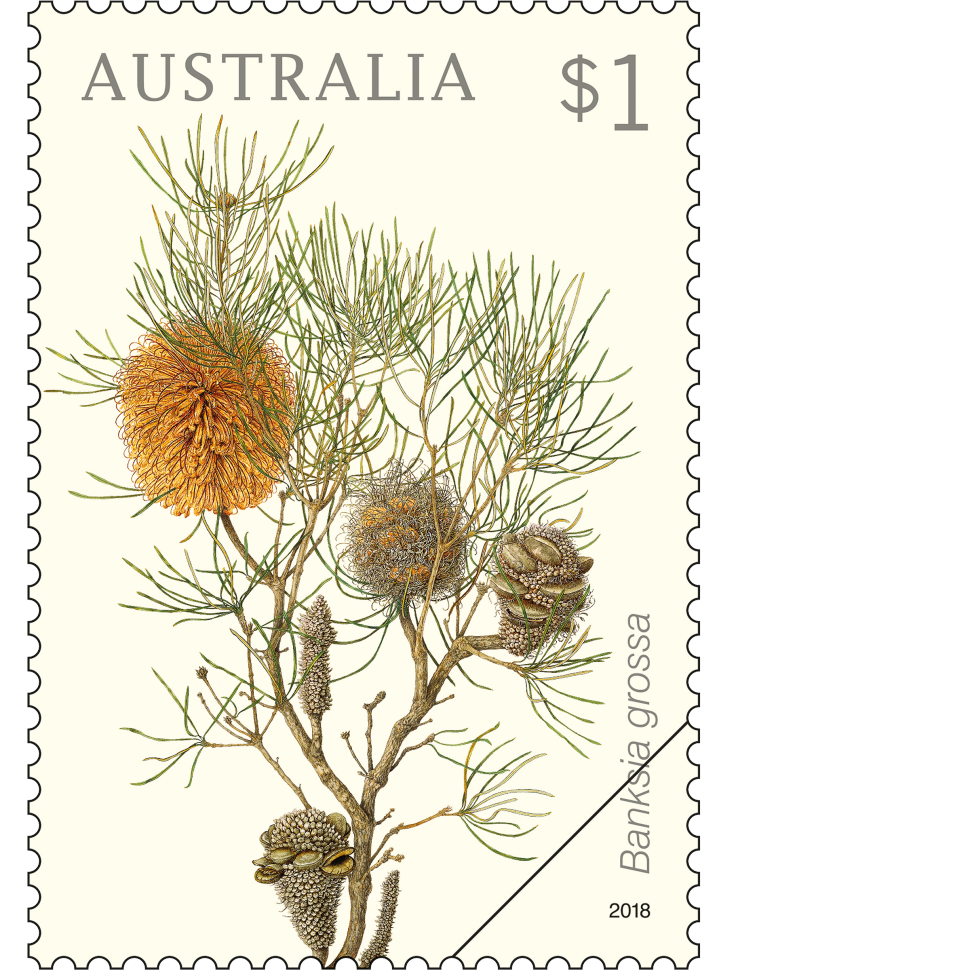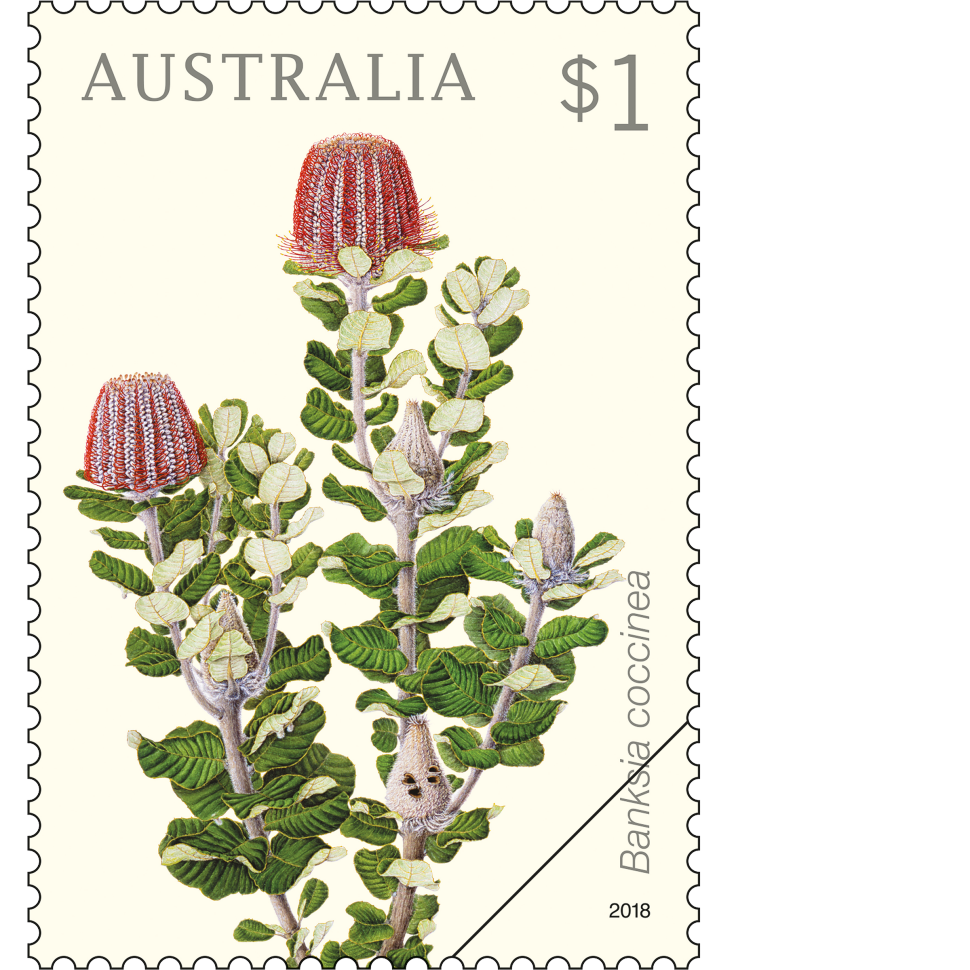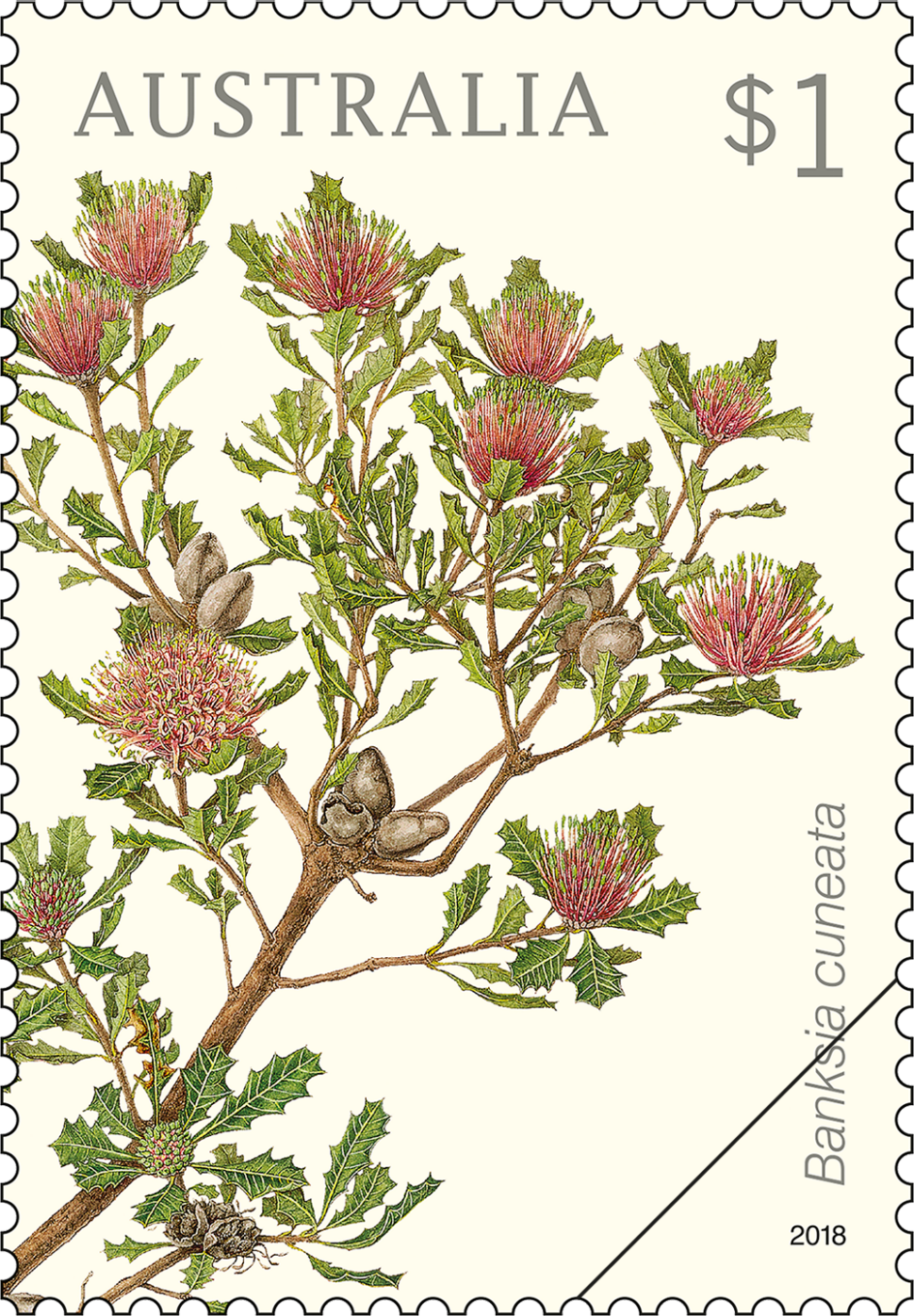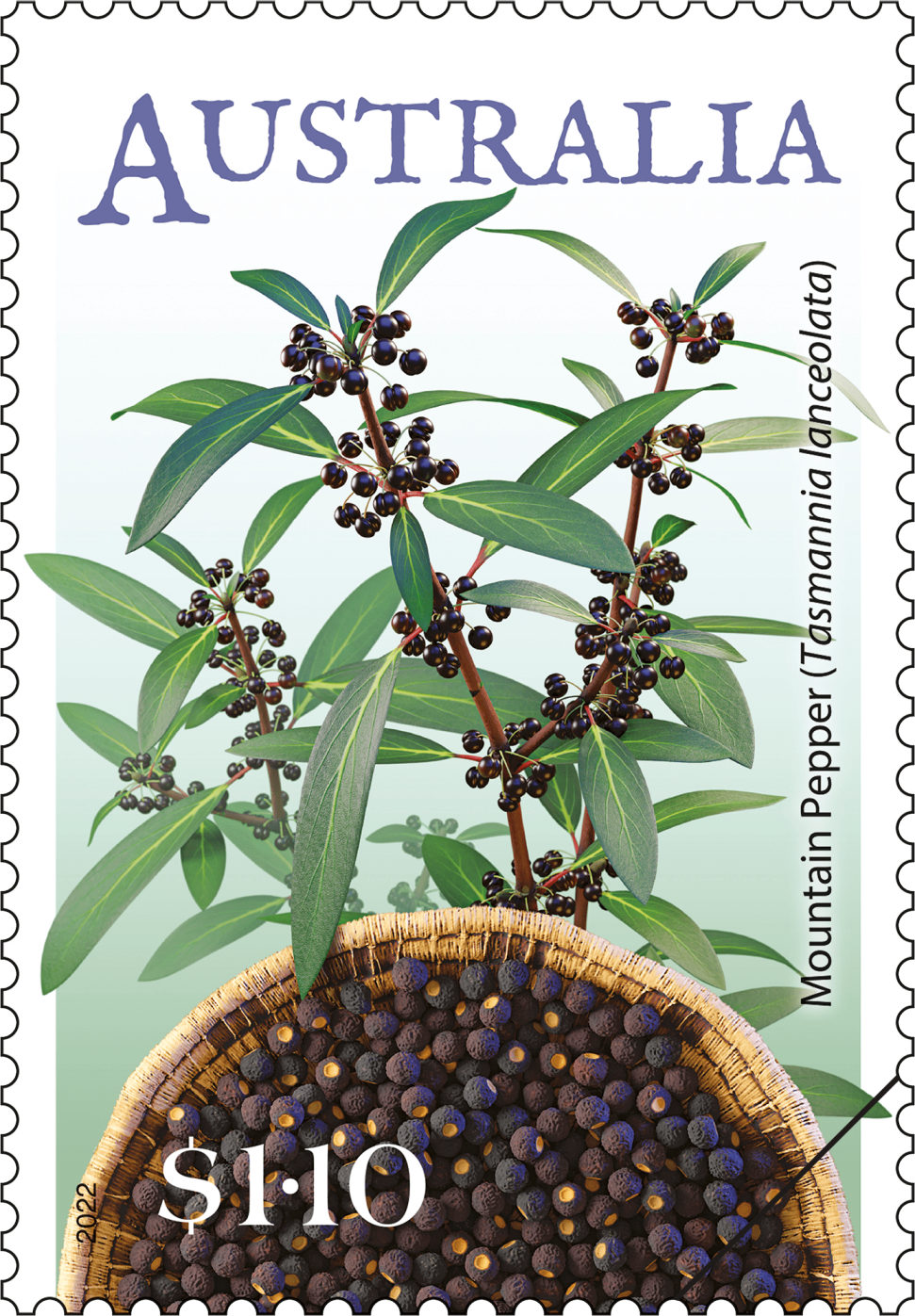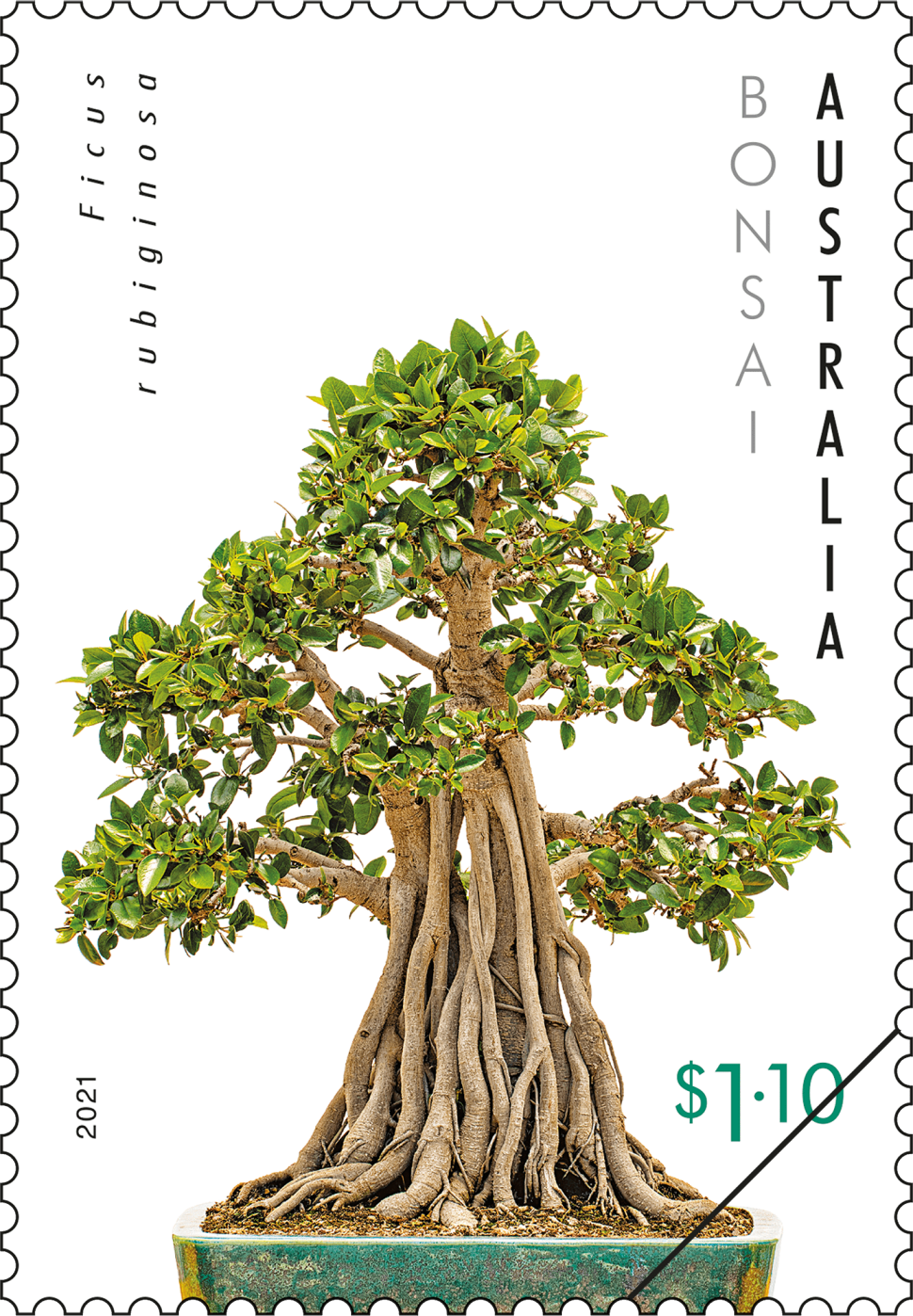The genus Banksia is a group of woody evergreens that ranges from prostrate shrubs to upright trees of up to 25 metres, with diverse foliage and large, complex flower heads. Each flower spike can comprise hundreds or even thousands of individual flowers; Banksia grandis, for example, has up to 6,000. Flower colouration ranges over a warm palette: cream, yellow, orange, yellow-green, red, pink and brown. Many species in this genus have a fire-tolerant trunk, from which growth will sprout following a bushfire; the trunks of others are thin-skinned and the species regenerate from seed following a fire.
Of the 173 species in the Banksia genus, all but one (which extends to Papua New Guinea and the Aru Islands) are endemic to Australia. (Until recently, dryandras had been treated as a separate genus to banksias, but new research proves their evolutionary relationship to banksias, raising the species number in this genus from 77.) Although banksias occur in every state and territory, the region of greatest number and diversity is the south-west of Western Australia – the country’s most botanically rich state. Largely coastal, banksias rarely occur in the dry centre of the continent and those species that occur in the east generally do not occur in the west, and vice versa; only B. dentata is common to both sides of the country. The survival of a number of banksias is at risk, including B. cuneata, B. brownii and B. verticillata.
Historically, banksias are significant to Australia. They are among the first floral species collected during Cook’s 1770 journey to Australia, and then scientifically described. The genus takes its name from botanist Joseph Banks, for whom this genus was most important. He and Daniel Solander collected four species at what became known as Botany Bay, during the Endeavour’s voyage. They then collected a fifth species in Queensland, drying, pressing and describing the specimens while artist Sydney Parkinson began watercolour illustrations. Well before the journey of these 18th century imperial explorers, Aboriginal people had long used the nectar of banksias in their diet.
All illustrations are from the Monash University Collection, provided courtesy of Monash University Museum of Art.
Designer
The stamps feature the artwork of celebrated Australian botanical artist Celia Rosser, owner and artist-in-residence at Celia Rosser Gallery in Gippsland. Celia was Monash University’s botanical artist from 1974 to 1999, where she undertook a 25 year project to illustrate Australia’s banksia species.
Products released in this issue
- Minisheet
- First day cover (blank, gummed, minisheet)
- Stamp pack
- Booklet of 20 x $1 stamps (self-adhesive)
- Maxicards
Technical specifications
- Issue date
- 20 February 2018
- Issue withdrawal date
- 31 August 2018
- Denominations
- 4 x $1
- Stamp design
- Celia Rosser
- Product design
- Jo Muré, Australia Post Design Studio
- Printer
- RA Printing
- Paper - gummed
- Tullis Russell Red Phosphor
- Paper - self-adhesive
- Securepost MC 90
- Printing process
- Offset lithography
- Stamp size
- 26mm x 37.5mm
- Minisheet size
- 170mm x 85mm
- Perforations
- 14.6 x 13.86
- Sheet layout
- Module of 50
- FDI postmark
- Banksia NSW 2216
- FDI withdrawal date
- 21 March 2018
B. speciosa (meaning “showy” in Latin) occurs naturally on the south coast of Western Australia, between east Mt Barren to Point Culver. It prefers a habitat of consolidated white-sand dunes, sandplains and tall shrubland. This shrub, which has striking long, triangular-lobed leaves, can reach eight metres in height. Its cream to pale yellow flowers appear throughout the year, though most prolifically in summer and autumn.
This small, slow-growing shrub was first described as recently as 1981 by banksia specialist Alex George. It grows to around one metre in height and its name refers to its clustered coarse, linear leaves on short branches. Its flowers are rust to golden-brown in colour, with styles of dark red to purple, and it blooms from March to September. The natural occurrence of this fire-resistant species is limited to around Eneabba and Regans Ford, north of Perth, where it prefers a habitat of shallow grey/white sand over laterite in shrubland.
B. coccinea is a striking species, with its bright red flower heads highlighted by its grey-green oblong foliage. Its grey individual flowers are offset by scarlet styles, and it blooms from June through January. Growing to around eight metres in height, it occurs naturally from Albany to Esperance in Western Australia, preferring a habitat of deep white/grey sand in tall shrubland or low woodland.
$1 Banksia cuneata
Like B. grossa, this species was also first described by Australian botanist and banksia specialist Alex George, this species described in 1971. It has two common names: Matchstick Banksia for its flowers, and Quairading Banksia for the place it was discovered. It is listed “endangered” on the IUCN Red List and the Environment Protection and Biodiversity Conservation Act 1999, with less than 2500 mature trees evident in the wild. This smooth-barked shrub grows to a height of around four metres. The flower heads are three to four centimetres wide, with styles that are cream turning pink, with a green pollen presenter, and it blooms from September to December. It occurs around Quairading, Brookton and Cuballing, in Western Australia.
This content was produced at the time of the stamp issue release date and will not be updated.
